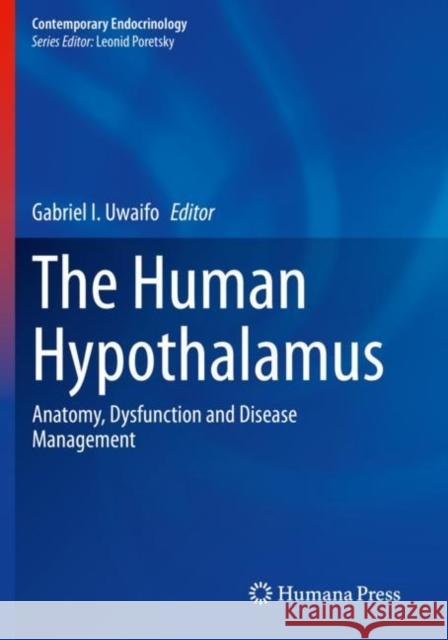The Human Hypothalamus: Anatomy, Dysfunction and Disease Management » książka
topmenu
The Human Hypothalamus: Anatomy, Dysfunction and Disease Management
ISBN-13: 9783030621896 / Angielski / Miękka / 2021
The Human Hypothalamus: Anatomy, Dysfunction and Disease Management
ISBN-13: 9783030621896 / Angielski / Miękka / 2021
cena 623,94
(netto: 594,23 VAT: 5%)
Najniższa cena z 30 dni: 597,58
(netto: 594,23 VAT: 5%)
Najniższa cena z 30 dni: 597,58
Termin realizacji zamówienia:
ok. 22 dni roboczych
Dostawa w 2026 r.
ok. 22 dni roboczych
Dostawa w 2026 r.
Darmowa dostawa!
The hypothalamus is an anatomically small but functionally important part of the brain. In functional and pathophysiological terms, the hypothalamus represents the intersection of several areas of clinical and medical expertise. The human hypothalamus can be astutely referred to as the crossroad of endocrinology, psychiatry, neurology and neurosurgery. Because of its involvement in myriad physiologic functions and the varied ways disorders involving it can manifest, hypothalamic disease can initially come to medical attention in widely disparate settings and with widely different clinicians. Therefore, the detection and proper care of hypothalamic dysfunction and disease often requires carefully coordinated multidisciplinary care.
This volume fills a significant void in the medical professional community, comprehensively presenting the scope of hypothalamic structure, function, dysfunction and disease to cater to the various clinical, teaching and research professionals that have a stake in this part of the human brain. This text captures in one place all the information that practicing clinicians, clinician scientists, and researchers need to be adequately informed about various aspects of the hypothalamus in all its complexity. It is comprehensive and broad in scope so that it provides relevant reference information for the wide range of professionals involved in the pre- and post-mortem detection, diagnosis, characterization, care and management of various hypothalamic disorders and diseases in addition to providing a sound anatomic and physiologic foundation of the normal human hypothalamus.
The Human Hypothalamus can be used to differing degrees by medical professionals and students alike, finding utility for interested general clinicians, medical school and allied health professional teaching faculty as well as subspecialists in domains as wide as neurosurgery, neuroendocrinology, clinical psychiatry and neuro-oncology.











